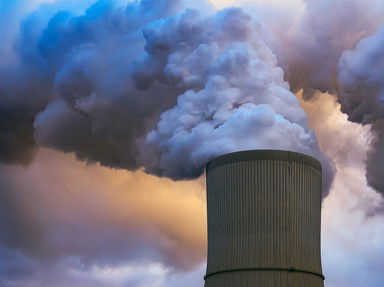Quiz Answer Key and Fun Facts
1. Nuclear power plants work through nuclear fission, a process where which part of a uranium or plutonium atom's structure is split?
2. Modern wind turbines turn the wind's kinetic energy into mechanical energy. With the aid of metal coils, which of these ideas is necessary to complete this process?
3. Biomass power plants work by burning organic materials, which heats steam, which then turns a turbine and generates electricity. Which of these materials would NOT be suitable for use in a biomass power plant?
4. Coal power plants rely on turning chemical energy into thermal energy that heats steam. The reaction between which two elements most contributes to this process?
5. Gravitational potential energy converted into kinetic energy due to flow (which is later converted into electrical energy) is the main source of which of these kinds of power plants?
6. Oil-fired power plants, like most power generated from fossil fuels, rely on what type of chemical reaction to create electricity?
7. Photovoltaic solar farms take in sunlight in order to excite electrons, which makes them break free of their atoms. This creates an electric current that can be harnessed. Energy from what particles is absorbed in this first step?
8. OTEC (ocean thermal energy conversion) power plants use a unique source in which there is potential energy: temperature difference. Which of these is the correct direction of energy flow in these plants?
9. Gas-fired power plants work in a similar manner to other plants that use fossil fuels. The gas is burned to directly or indirectly power turbines. What is the primary component of the natural gas used in these plants?
10. The millennia-long decay of radioactive elements and the residual heat leftover from Earth's formation form the basis of which kind of power plant's energy source?
Source: Author
trident
This quiz was reviewed by FunTrivia editor
rossian before going online.
Any errors found in FunTrivia content are routinely corrected through our feedback system.
